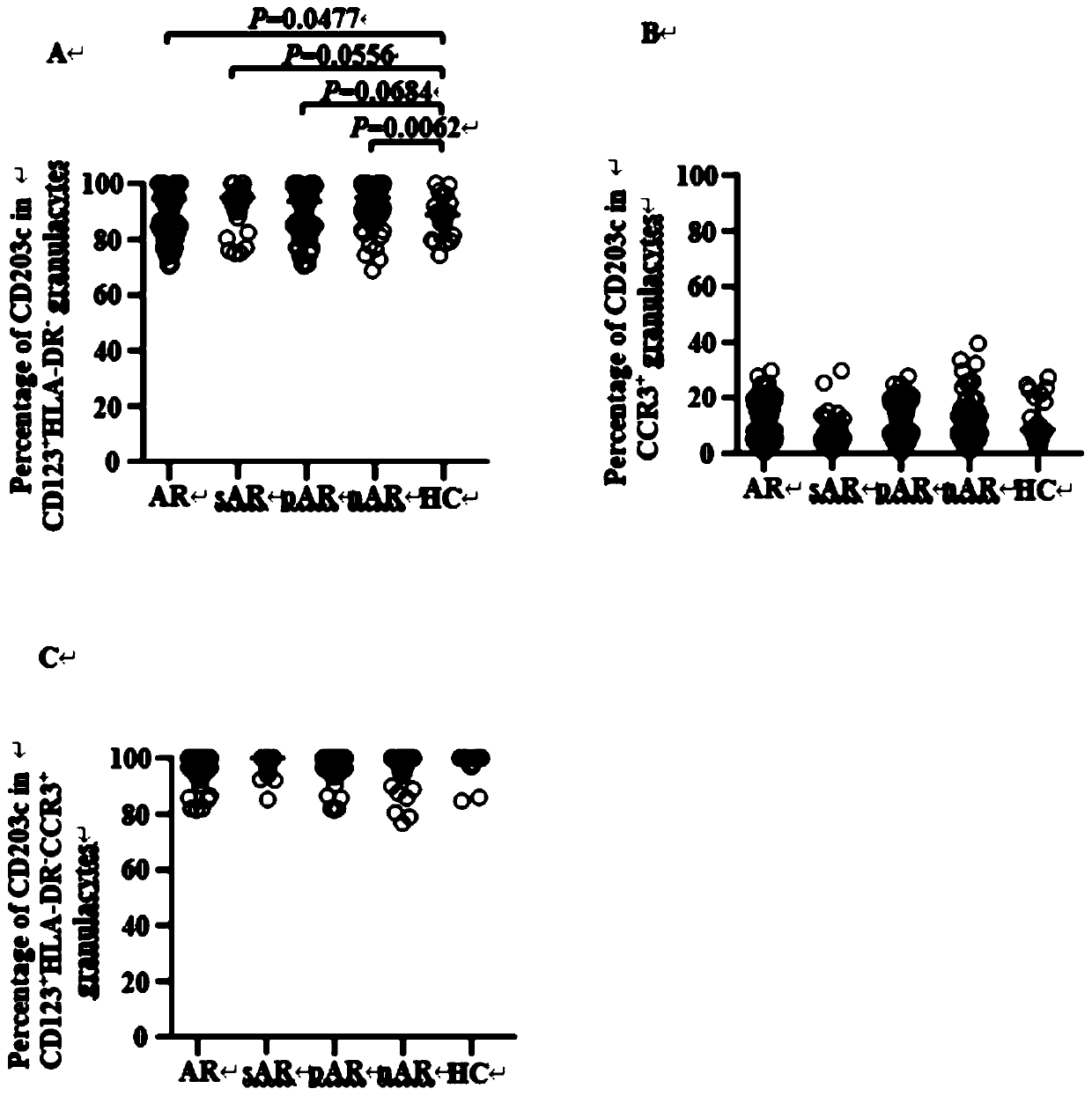Application of granulocyte group basophils as diagnostic markers for allergic diseases
A technology for basophils and allergic diseases, applied in the field of medical diagnostics, can solve the problems of missed diagnosis, false negatives, and no patients.
- Summary
- Abstract
- Description
- Claims
- Application Information
AI Technical Summary
Problems solved by technology
Method used
Image
Examples
Embodiment
[0072] 1. Flow cytometry method
[0073] Add FcR blocker and dead cell removal dye: Take 100 μL of blood sample at the bottom of the flow-loading tube, add 5 μL of human FcR blocker and 5 μL of dead cell removal dye (7-AAD) to the blood sample, and pipette Gently pipette the blood sample 5 times, and incubate at room temperature (18°C-22°C) in the dark for 10 minutes;
[0074] Add fluorescence-coupled flow antibodies: After incubation, add 5 μL of each of the following fluorescent-coupled antibodies to each tube according to the serial number in Table 1, pipette the blood sample gently for 5 times, and incubate at room temperature (18°C-22°C) in the dark 15min.
[0075] Lyse red blood cells: After the incubation, add 1.5mL red blood cell lysate, gently pipette the blood sample 5 times, and incubate at room temperature (18-22°C) in the dark for 12 minutes;
[0076] Wash cells: After the incubation, place the flow sample tube containing the blood sample in the centrifuge, set ...
PUM
 Login to View More
Login to View More Abstract
Description
Claims
Application Information
 Login to View More
Login to View More - R&D
- Intellectual Property
- Life Sciences
- Materials
- Tech Scout
- Unparalleled Data Quality
- Higher Quality Content
- 60% Fewer Hallucinations
Browse by: Latest US Patents, China's latest patents, Technical Efficacy Thesaurus, Application Domain, Technology Topic, Popular Technical Reports.
© 2025 PatSnap. All rights reserved.Legal|Privacy policy|Modern Slavery Act Transparency Statement|Sitemap|About US| Contact US: help@patsnap.com



